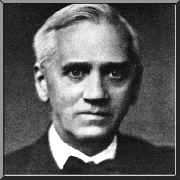 Alexander
Fleming was born in 1881 at Lochfield, a farm outside
Darvel, a small town in Ayrshire, Scotland. He was the third child,
with seven other brothers and sisters. After completing his education
at Regent Street Polytechnic, London in 1897, he took an office job
for a few years. In 1901, he quit his job and went to St. Mary
Hospital to study medicine. He then worked in Almroth Wright's
research team as a research assistant with a strong interest in
bacteriology. During the war between Britain and Germany in 1914,
Fleming joined the British Royal Army Medical Corps to develop a cure
to reduce the number of soldiers dying from infected wounds. He
argued that antiseptics were not effective in preventing wounds from
becoming infected. His argument was, however, rejected and little was
done to relieve the suffering of many wounded soldiers.
Alexander
Fleming was born in 1881 at Lochfield, a farm outside
Darvel, a small town in Ayrshire, Scotland. He was the third child,
with seven other brothers and sisters. After completing his education
at Regent Street Polytechnic, London in 1897, he took an office job
for a few years. In 1901, he quit his job and went to St. Mary
Hospital to study medicine. He then worked in Almroth Wright's
research team as a research assistant with a strong interest in
bacteriology. During the war between Britain and Germany in 1914,
Fleming joined the British Royal Army Medical Corps to develop a cure
to reduce the number of soldiers dying from infected wounds. He
argued that antiseptics were not effective in preventing wounds from
becoming infected. His argument was, however, rejected and little was
done to relieve the suffering of many wounded soldiers.
When World War I was over, Fleming continued working at St. Mary's Hospital. One day in 1928, before tossing some old petri dishes of culture away, he made an accidental discovery of a blue mold growing on the culture of some harmful kind of bacteria. The mold seemed to be able to kill off the bacteria. A series of experiments later proved his findings and led to the discovery of penicillin. It was a strain of penicillia which could kill off bacteria while not causing any damage to wounds. It worked against many kinds of bacteria and was mostly safe for the human body. Unfortunately, with insufficient support from the medical community, the research had to stop.
Finally in the late 1930s, other scientists found a way to mass-produce penicillin. British and American drug companies began to manufacture the drug in large quantites. It was then used to cure many infections during World War II. In 1945, Fleming was presented the Nobel Prize for Medicine. He humbly said, "Nature makes penicillin; I just found it." Fleming spent the rest of his career at St. Mary's Hospital until his death in 1955 of a sudden heart attack. Fleming was married twice and had one son.
Page created by: Hoe-Shuen Li
Tames, R. (1990). Alexander Fleming. Watts, Lifetime series.
Malkin, J. (1985) Sir Alexander Fleming: Man of Penicillin. State Mutual Book.
Jacobs, F. (1985). Breakthrough: The Ture Story of Penicillin. Putnam.
McFarlane, G. (1984) Alexander Fleming: The Man and the Myth. Oxford: Oxford University Press.